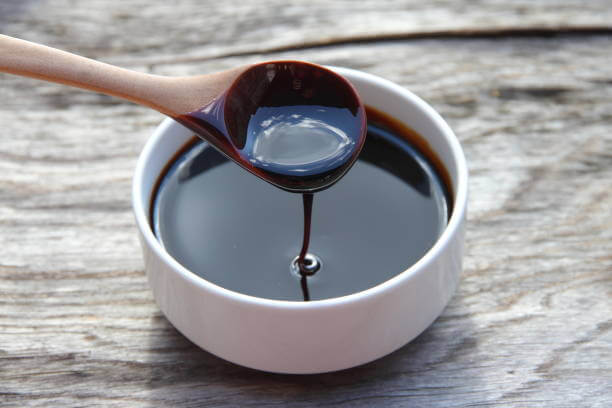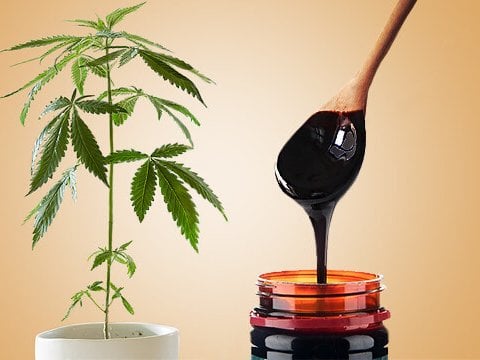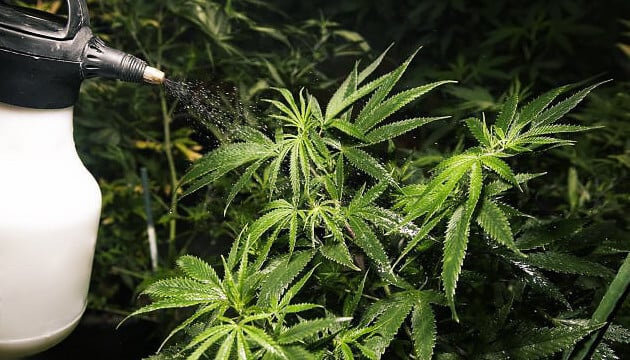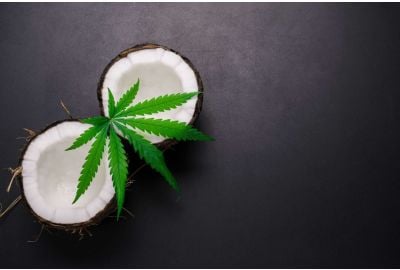Molasses For Cannabis: Big Buds Secret Ingredient
What if we told you a common pantry item could make your buds extra large and resinous? Enter molasses for cannabis.
Sweet, sticky, and indispensable for baking, this syrup is an excellent cultivation supplement. It’s packed with crucial minerals to support soil microbes and encourage plant development.
Large crops with healthy roots produce hefty harvests: that’s what you get with molasses. Ready to take advantage of it?
Keep reading to learn about molasses for pot plants. We discuss its types, properties, and ways to reap its benefits in your garden.
Let’s get started.
What are molasses & what are the types of molasses?
Weed molasses is a dark syrupy substance with a high carbohydrate content. It’s a byproduct of the food industry, obtained by boiling sugarcane or sugar beet juice and removing the sucrose crystals.
You can get several types of this substance, varying by color, texture, and carbohydrate contents. Which is the best molasses for weed?

Blackstrap molasses for cannabis
Blackstrap is the perfect molasses for cannabis. It results from boiling sugar cane or beet juice three times and is more bitter than sweet. It’s vicious and rich in concentrated carbs, with a honey-like texture.
Medium or dark molasses
Dark molasses is the product of boiling sugar plants two times. It’s deep brown in color, strong in flavor, and the second-best molasses for cannabis.
Light molasses
White molasses is lighter and less concentrated than other options. It results from boiling sugar plants once and has a mild and sweet flavor. The low sugar and mineral contents make this byproduct unsuitable as molasses for marijuana plants.
Treacle
Treacle contains less sugar than regular molasses and appears much lighter. It’s sweet with a bitter edge, produced by boiling raw sugar cane juice and separating the syrup from the liquid.
While fantastic in the kitchen, treacle isn’t as valuable in your garden. Skip it and choose blackstrap molasses for weed plants.
What does molasses do for cannabis plants?
What does molasses do for cannabis? It aids cultivation by introducing beneficial nutrients in the medium to feed the crops and soil microbes. Its chemical makeup includes:
- Carbohydrates: feed Rhizobacteria to help plants tap into water and nutrients.
- Potassium: supports photosynthesis and bud production in flowering.
- Calcium: contributes to plant tissue growth and structural integrity.
- Iron: aids photosynthesis and DNA synthesis for valuable seed genetics.
- Selenium: synthesizes enzymes and antioxidants to reduce crop stress.
- Copper: helps plants create energy and break down food sources.
- Magnesium: promotes healthy chlorophyll production and growth.
Healthy soil supports the roots, enhancing the movement of air, water, and minerals. As a result, the crop absorbs more food, producing spacious internodes for bud sites. For you, this means bigger and stickier yields.
Additional benefits of molasses for plants include:
- Reducing insect activity. Many pests die upon consuming sugar. Using molasses lets you get rid of crawlers without chemicals.
- Reducing salt buildups. Molasses feeds bacteria that break down soil salts. That way, it indirectly prevents a nutrient lockout.
- Removing chemical weed flavors. Lingering nutrients on harvest time can make buds taste sharp and sour. Molasses flushes them out and leaves only ganja sweetness.
Now you know why you’d use molasses for weed plants, so let’s see how you’d do it.

Sulfured vs. unsulfured molasses: what to choose?
Blackstrap molasses for cannabis comes in two forms: sulfured and unsulfured. Which should you choose?
Manufacturers might add sulfur dioxide to molasses to enhance its shelf-life. This preservative kills microbes and disrupts the pH level for cannabis, though. Sulfured molasses is unsuitable for gardening, so shop unsulfured.
When to use molasses for marijuana plants?
Once you have your product, let’s see when to add molasses to weed for the best results.
Molasses is safe to use for weed from seed to harvest, but it’s most beneficial in the cannabis flowering stage.
Soil growers should start supplying the syrup in early vegging to support the microbes. How much molasses for cannabis is enough for early growth? Stick to a teaspoon per gallon of water.
If cultivating in hydro or coco, molasses won’t do much till flowering, so hold off to prevent nutrient burn. Its minerals become indispensable only when your crops bloom.
How to use molasses for cannabis
Molasses on weed plants has several practical applications. Its value doubles when mixed with top-quality nutrients.
Here are five ways to reap its benefits.
Molasses as an additive to compost tea
Weed feeding with compost tea supplies microbes and nutrients to organic gardens. The benefits of this power substance increase when combined with blackstrap molasses for weed.
Add one teaspoon of molasses to your compost tea preparation and water as usual. The addition bestows more carbs and yield-enhancing elements to the medium.
Watering weed plants with molasses
Another way to use molasses for bigger buds is while watering cannabis. You dissolve the syrup in your H2O and supply it directly to the medium. The bacteria feasts on the carbs while the root zone soaks in the minerals.
Provide 0.17 fl. oz. of molasses per gallon once a week in the vegetative stage. Increase the dose and frequency in flowering to accommodate the higher demand for minerals, adding 0.34 fl. oz. per gallon twice a week.
Adding dry molasses to the soil
Besides watering with molasses for cannabis plants, you can augment your soil with it. That way, its chunks release minerals each time you shower the medium.
Sprinkle powdered or grain molasses onto your potting mix before sowing high-yield seeds. Add another dose once plants blossom to replenish the nutrient source.
Using molasses as a foliar spray
Spraying molasses on cannabis leaves provides gentle protection against pests and removes built-up nutrients. The buds become sweet and remain bug-free, and you don’t need to worry about harmful pesticides.
Dissolve a teaspoon of molasses into a gallon of water. Then spray it liberally onto the leaves once every two weeks for added food and protection.

Using molasses as a pesticide for cannabis
The above formula fights aphids, whiteflies, and lace bugs. Neither of these pests enjoys sugar, so they’ll steer clear of sprayed weed.
Molasses for marijuana soil hinders insect activity in the medium. For example, spider mites often live in the dirt, and the sugar will kill them before they damage your crop.
FAQ
Let’s end by answering several community questions about molasses and cannabis.
Will molasses make my buds bigger?
Growers get larger and stickier flowers with molasses for cannabis. This substance contains potassium, micronutrients, and soil-boosting carbs, increasing yield potential.
How often should I use molasses on my plants?
Supply molasses for cannabis plants once a week in vegging and twice in flowering. Double the dose when your crop blooms to accommodate its increased appetite.
Does molasses make my buds sweeter?
Molasses in cannabis might sweeten weed by clearing it from chemical nutrients. Flushing with molasses lets the crop use up the nutrients it has in stock, resulting in a smoother flavor profile.
Does molasses raise or lower pH?
Sulfured molasses for marijuana plants may lower soil pH. Fluctuations are rare with unsulfured syrups, but they’re not impossible. Keep a meter on hand and check for excessive acidity at least once a week.
What are the alternatives to molasses?
Sugars help microbes thrive and plants grow, so some cultivators use honey as an alternative to molasses for weed. This option isn’t as well-rounded and beneficial for marijuana, though. Besides sugar, molasses contains essential nutrients that support massive yields.
When to stop using molasses
Knowing when to stop using molasses is essential. As a rule, provide it till the final flush unless you notice nutrient burn symptoms like yellowing leaf tips.
Molasses for weed: Fatten your buds
Molasses and marijuana are a match made in heaven. The syrup boosts soil health, supplies essential nutrients, keeps away pests, and removes the chemical taste from your cannabis. By doing so, it improves harvest quantity and quality.
Ready to see this substance do magic in your garden? Visit our shop to buy seeds and get bigger buds with molasses for weed plants.
About the author: Parker Curtis
Parker Curtis has around a decade of cannabis-growing experience, specialising in soil-less and hydro grows. He’s mastering outdoor, greenhouse, and indoor grows.


